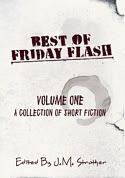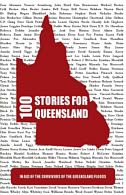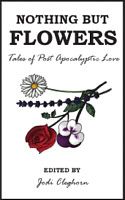A little while ago, after asking for reviewers, the folks at Molecover kindly sent me a sample of their Moletape strengthening tape for review. To be fair, I'm not a huge Moleskine user, though I did have a couple of notebooks lying around, neither with any damage to the spines, but I decided to fit one of them with the Moletape anyway.
Molecover also sells Moleskine notebooks and the Molecover, a protective leather cover for your Moleskine notebook. Currently available in black, white or tan leather, their website states they will include a strip of Moletape with every Molecover order.
Here's the Moletape as I received it, next to the pocket Moleskine it'll be going on:
 My Moletape sample arrived on a Molecover-branded backing sheet and was already pre-sized for a small Moleskine. There was what turned out to be a little ink transfer from the Molecover branding on the backing sheet to the note it came wrapped in, but no dye transfer from the Moletape itself. So far so good.
My Moletape sample arrived on a Molecover-branded backing sheet and was already pre-sized for a small Moleskine. There was what turned out to be a little ink transfer from the Molecover branding on the backing sheet to the note it came wrapped in, but no dye transfer from the Moletape itself. So far so good.Initial impressions were good, the Moletape is a strong, matte-finished adhesive cloth tape in rich black, one improvement I could suggest would be to pre-score the backing sheet along where the tape will attach to the spine of the Moleskine so this part of the backing may be removed separately, making it easier to line the Moletape up straight while applying it to the notebook's spine. I do however, like the pre-cut tabs to fit over the ends of the notebook's spine.
Now for the fitting. Here goes...
Separating the Moletape from its backing sheet proved to be more difficult than I had anticipated, and the amount of force required did deform the shape of my sample a little. Any more force and I was afraid the tape would tear where the spine end cutouts join the main piece of tape.
 Applying the Moletape to the spine of my Moleskine was relatively simple, requiring only a little trial and error to line the two up by eye, then take the plunge and apply Moleskine to tape; this seemed the easiest way to do it - applying the spine of the notebook to the tape whilst the tape was lying flat on a firm surface.
Applying the Moletape to the spine of my Moleskine was relatively simple, requiring only a little trial and error to line the two up by eye, then take the plunge and apply Moleskine to tape; this seemed the easiest way to do it - applying the spine of the notebook to the tape whilst the tape was lying flat on a firm surface. Then it was simply a matter of smoothing the Moletape over the front and back of the notebook, and here's where I hit my first snag - whilst applying Moletape to the spine of the notebook was simple enough, ensuring a neat straight line down the cover of my Moleskine proved almost impossible; maybe I'm being a bit picky here, but the end result was, despite quite a bit of tweaking, not as sleek as I had hoped.
Then it was simply a matter of smoothing the Moletape over the front and back of the notebook, and here's where I hit my first snag - whilst applying Moletape to the spine of the notebook was simple enough, ensuring a neat straight line down the cover of my Moleskine proved almost impossible; maybe I'm being a bit picky here, but the end result was, despite quite a bit of tweaking, not as sleek as I had hoped. The extra length of the Moletape was great for folding over the edges of the cover, until that is, I began to tackle to rear cover where the pocket is. I found the only way to fit the Moletape was to trim the fold over flaps so they didn't obsure the pocket opening - trouble was, to do this successfully I had to leave them so short as to only just fold around the rear cover of the Moleskine.
The extra length of the Moletape was great for folding over the edges of the cover, until that is, I began to tackle to rear cover where the pocket is. I found the only way to fit the Moletape was to trim the fold over flaps so they didn't obsure the pocket opening - trouble was, to do this successfully I had to leave them so short as to only just fold around the rear cover of the Moleskine. Fitting the tabs down the inside of the Moleskine spine was easy, I opened the Moleskine so the covers were touching which bowed the spine enough to poke the tab down the opening with the help of the blunt end of a pair of tweezers.
Fitting the tabs down the inside of the Moleskine spine was easy, I opened the Moleskine so the covers were touching which bowed the spine enough to poke the tab down the opening with the help of the blunt end of a pair of tweezers. So, there was have it, a Moletaped Moleskine.
So, there was have it, a Moletaped Moleskine.So, what did I think?
Overall, I think Moletape is a great product, though fitting it is not as simple as I expected it would be, and whilst at least some of the end result is down to operator error, Moletape's adhesive backing makes it very difficult to separate the tape from its backing without deforming the overall shape. Had I possessed the skill to apply it to my notebook and retain a sharp edge to the front cover I would probably have been happier with the end result.
That said, I have no doubt that Moletape provides a wonderfully strong extra layer of protection for the spines of Moleskine notebooks, and I really like the look of the new colours choices in the Moletape range. I would be inclined to give them ago so I could colour-code my notebooks at the same time as protecting their spines.
At a Glance:
Model: Black Moletape (Pocket sized Moleskine size)
Colour: Black. Also available in Russet, Yellow, Pink, Sky Blue, Violet, Olive, Red, Orange, Grey and Brown.
Available from: Molecover in the USA
Price: $20 for 5 strips (Small or Large size)
Overall: 4 out of 5










































